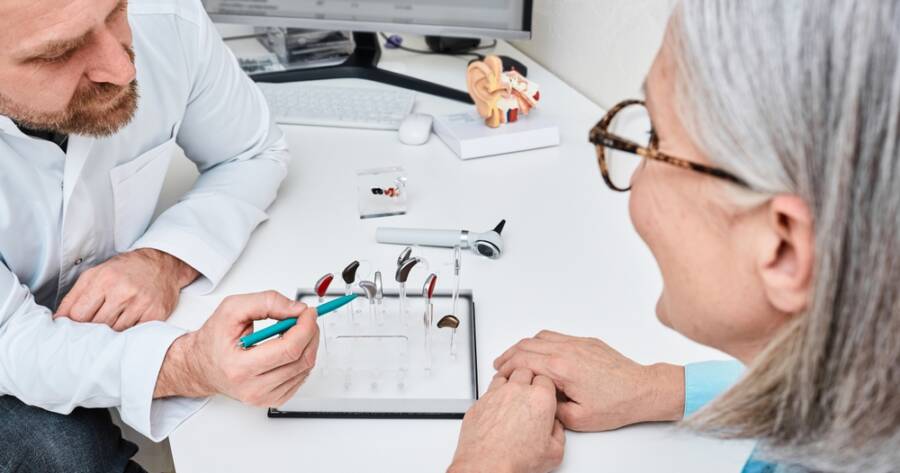Hearing aids are small devices that amplify sound for those with hearing loss, using advanced technology to enhance listening. They improve not just hearing, but also quality of life, aiding communication and allowing for a more active social presence.
How Hearing Aids Work
Hearing aids consist of three main components: a microphone, an amplifier, and a speaker. The microphone picks up sound from the environment and converts it into electrical signals. These signals are then processed and amplified by the amplifier before being sent to the speaker, which delivers the amplified sound into the ear.1 Modern hearing aids are highly sophisticated, often featuring digital signal processing that can filter background noise, enhance speech, and even connect wirelessly to smartphones and other devices.
Hearing aids come in various styles, including behind-the-ear (BTE), in-the-ear (ITE), and in-the-canal (ITC) models, each catering to different levels of hearing loss and personal preferences. BTE models are the most visible but are generally more powerful and can accommodate a wider range of hearing loss. ITE and ITC models are more discreet, fitting directly in the ear or ear canal, making them less noticeable but potentially less powerful.
The Benefits of Hearing Aids
The primary benefit of hearing aids is improved hearing, which directly impacts daily life. They can help individuals better understand conversations, enjoy music, and stay engaged in social activities. This can significantly reduce the frustration and isolation often associated with hearing loss. Moreover, better hearing contributes to improved mental health, as it allows individuals to remain connected with loved ones and actively participate in social settings.
Hearing aids can also enhance safety by allowing users to hear important sounds like alarms, traffic, and emergency signals. For those who work in environments where communication is critical, such as healthcare or customer service, hearing aids can be vital tools for professional success.
Choosing the Right Hearing Aid
Selecting the right hearing aid depends on several factors, including the degree of hearing loss, lifestyle, and budget. A hearing test conducted by an audiologist or hearing care professional is the first step in determining the type and level of hearing aid needed. These professionals can recommend devices based on individual hearing profiles, ensuring the best fit and performance.2
It’s important to consider the features offered by different hearing aids. Many modern devices come with Bluetooth connectivity, allowing users to stream audio directly from their phones, televisions, or other devices. Some hearing aids also offer rechargeable batteries, making them more convenient and eco-friendly compared to traditional disposable batteries. Additionally, advanced models may include directional microphones, noise reduction, and feedback cancellation, which significantly enhance sound quality and user comfort.
The Cost of Hearing Aids
Hearing aids can be a significant investment, with prices varying widely depending on the brand, technology, and features.2 Basic models can start at a lower price, while high-end devices with advanced features can be quite the investment. While most insurance plans may not cover hearing aids, some providers and government programs can offer financial assistance. It’s worth exploring these options to make hearing aids more affordable.
Embracing Better Hearing
Hearing aids are life-changing devices that can greatly enhance hearing and overall quality of life for those with hearing loss. With a wide range of styles, features, and prices, there is a hearing aid suitable for almost every need. By consulting with a hearing care professional, individuals can find the right device to help them reconnect with the world around them, ensuring they don’t miss out on the sounds that matter most.

